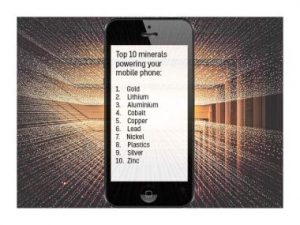Aluminum is one of the most abundant element in Earth crust and the most extensively used nonferrous metal. Modern construction, automotive, aeronautics, energy, food and other industries wouldn’t be possible without aluminum. Also, this metal has become a symbol of progress.


Aluminum
Aluminum (Al), also spelt aluminum, is a substance, a lightweight silvery-white metal. It’s a part of Group 13 (IIIa, or boron group) of the table. The name aluminum derives from the Latin word alumen. Aluminum occurs in igneous rocks as aluminosilicates in feldspars, feldspathoids, and micas; in the soil derived from them as clay; and upon further weathering as bauxite and iron-rich laterite. Bauxite, a combination of hydrated aluminum oxides, is that the principal aluminum ore. Due to its chemical activity, aluminum never occurs in the metallic form in nature, but its compounds are present to a greater or lesser extent in the majority of rocks, vegetation, and animals. Crystalline aluminum oxide (emery, corundum), which occurs during a few igneous rocks, is mined as a natural abrasive or in its finer varieties as rubies and sapphires. Aluminum is present in other gemstones, like topaz, garnet, and chrysoberyl. Of the numerous other aluminum minerals, alunite and cryolite have some commercial importance.

Image source: https://en.wikipedia.org/wiki/Aluminium
History
Before 5000 BCE, in Mesopotamia, people made excellent pottery from clay that consisted widely of an aluminum mixture. Almost 4,000 years ago, Egyptians and Babylonians applied aluminum compounds in various chemicals and medications. In 1825, crude aluminum was separated by Hans Christian Ørsted, a Danish physicist, by reducing aluminum chloride with potassium amalgam. German chemist Friedrich Wöhler, using potassium metal as the reducing agent, produced aluminum powder and small globules of the metal, between 1827 and 1845. The new metal was shown to the public, in 1855, at the Paris Exposition. Around that time, it became available to extract the metal by the sodium reduction of molten aluminum chloride through the Deville process. In 1886, when electricity became available and cheap, Charles Martin Hall in the United States and Paul-Louis-Toussaint Héroult in France discovered the modern system of commercially manufacturing aluminum: electrolysis of purified alumina dissolved in melted cryolite. During the 1960s aluminum became the first, before copper, in the world production of nonferrous metals.

Image source: https://commons.wikimedia.org/wiki/File:Oersted_experiment.png
Properties
Aluminum possesses a rare combination of relevant properties:
- It is one of the lightest metals in the world: it’s almost three times lighter than iron
- very strong
- extremely flexible
- corrosion-resistant
- great electricity conductor
- it can be rolled, pulled and stamped.
- aluminium doesn’t catch fire,
- it’s very pliable: the extra-thin foil is three times thinner than a human hair.
- the metal is more cost-effective than other metals and materials.
Since aluminum easily forms aggregates with other chemical elements, a wide variety of aluminum alloys have been developed in multiple new areas of application. For example, aluminum combined with silicon and magnesium is used in the building of wheels, engines, chassis, and other parts of modern automobiles. Aluminum zinc alloy is widely used in the production of mobile phones and tablet PCs. Modern construction, automotive, aeronautics, energy, food, and other industries wouldn’t be possible without aluminum. Also, this metal has become a symbol of progress.

Image source: https://www.mecmining.com.au/the-top-10-metals-and-minerals-powering-your-mobile-phone/
Biological function

Image source: https://www.cooksillustrated.com/how_tos/6390-is-aluminum-cookware-safe
Aluminum has no known biological role. In its soluble form, it’s toxic to plants. Acidic soils structure almost 1/2 arable land on Earth, and also the acidity quickens the discharge of Al3+ from its minerals. Crops can then absorb the Al3+ resulting in lower yields. Our bodies absorb only a tiny low amount of the aluminum we absorb with our food. Foods above-average amounts of aluminum are tea, process cheese, lentils, and sponge cakes (where it comes from the raising agent). Cooking in aluminum pans doesn’t increase the quantity in our diet, but when cooking acidic foods like rhubarb. Some indigestion tablets are pure hydrated aluminum oxide. Aluminum can accumulate within the body, and a link with Alzheimer’s disease (senile dementia) has been suggested but not proven.
Info sources:
https://www.britannica.com/science/aluminum
https://www.rsc.org/periodic-table/element/13/aluminium
https://www.aluminiumleader.com/about_aluminium/what_is_aluminum/
https://www.weerg.com/en/blog/aluminum-properties-and-advantages-of-aluminum-0
